The Golden Retriever is a relatively new breed of dog that was created to meet the increased demands for retrieving dogs in the 19th century. The new and improved firearms made hunters able to shoot small game quicker and from longer distances than before, and this in turn made it harder to find the game. In other words the hunters needed a dog that could find and retrieve game, but at the same time carry and deliver the game without chewing and otherwise damaging the game, an ability known as a "soft mouth". Another ability deemed necessary in such a the dog, was for it to sit quietly and wait while the hunters were shooting only to find and retrieve the game upon command. A dog that was moving around or barking would soon scare all the game away. These qualities also happens to be what a lot of people are looking for in a companion dog and because of this, the Golden Retriever is one of the most popular dogs in the world today.
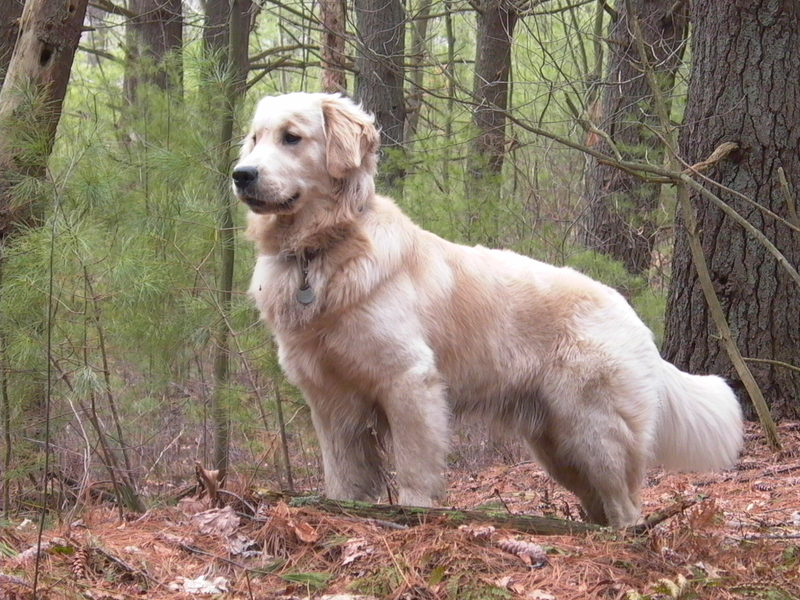 |
| A modern Golden Retriever |
The breed was created in Scotland, where the dogs would have to be able to retrieve game both on land and in water. The breeds from which the Golden Retriever is derived are:
Tweed water spaniel (a now extinct breed of dog from Scotland), Retrieving dogs of unknown origin (found in the same area and that gave rise not only to the golden retriever but many of the other retrievers), Irish Setters, Bloodhounds and St. John's water dog (also extinct).
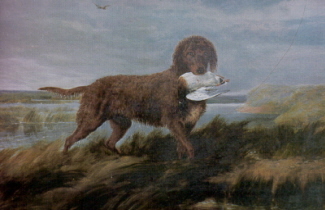 |
| A painting of the Tweed Water Spaniel |
.jpg) |
| An Irish Setter after a swim. |
|
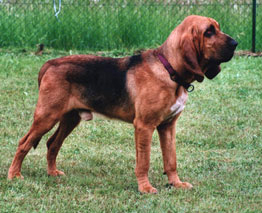 |
| The modern Bloodhound |
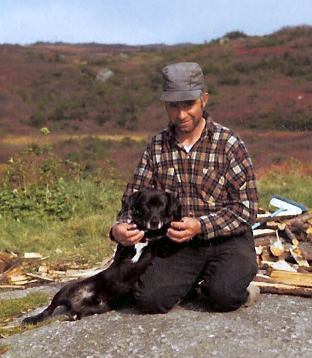 |
| A young St. John's water dog and its owner in 1971. |
The Golden Retriever is a very versatile dog that can be used for anything from its original purpose to seeing eye dog for the blind. It is friendly and eager to please, but demands regular walks and will be a lot happier if trained for a purpose rather than just lying on the sofa all day. Golden Retrievers do well in dog sports, obedience, agility and other disciplines, so if you want an active companion the Golden might provide a good companion for you.
 |
| A service dog. |
Health
The breed, like all other breeds have some breed specific health issues. Allergies, skin and ear problems are relatively common and like many other big breeds of dogs, hip and elbow dysplasia does occur. It is estimated that almost one in five Goldens has either HD or AD or both. The breed also suffers from some eye disorders like cataracts
, progressive retinal atrophy, glaucoma, corneal dystrophy and others. Cataracts is the most common condition, and is characterized by opacification of the lens. In the Golden Retriever, this condition is hereditary and dependent on genetic weakness, but the condition in and of itself may have a wide array of progressions and underlying causes.
 |
| Cataract in the left eye of a 1,5 year old Golden Retriever. |
Animals used for breeding should have their eyes, elbows and hips checked. Do not buy a puppy from a breeder that hasn't had the parents to the pups checked. Be especially aware of breeders that claim that they have healthy dogs, but have no papers to prove it. If the parents aren't checked, the puppies won't be registered. You might save some money buying an unregistered puppy, but the cost of buying a dog is small in comparison to what it costs to raise a dog. You might think you are saving money but the veterinary-bills aren't cheap, and even if there is never a guarantee that a registered puppy is healthy, the chance is higher if the parents are healthy.
 |
| An illustration I've made to show the difference between a normal hip (left) and hips with dysplasia (right). |
Due to the hip and elbow problems it is of utmost importance that the dog does not get too heavy, as this puts extra strain on the already sensitive joints. This might be harder than you might think because the Golden Retriever LOVES food. Make sure you are strict from the beginning, if it is bad for a grown up dog to be overweight, it is even worse for a puppy that is still growing. If uncertain, talk to your veterinarian about how much your dog should eat and weigh. Do NOT listen to people that show their dogs at dog shows when it comes to how much the dog should weigh, the dogs that do well in these competitions are usually overweight.
Training
The Golden Retriever is, like all other retrievers, extremely food motivated. They will work for food, sometimes even for their regular dog food. This is very good news since we can reduce the portion the dog gets is its bowl and use some of the food in training instead. This has two big benefits, first the risk of the dog gaining unnecessary weight is reduced since the dog doesn't get extra treats in addition to the food, and secondly the nutritional value of the food is likely higher than in the other treats, so the dog gets healthier food. Anyway, back to training, the Golden is highly trainable and as mentioned earlier, do well in different dog sports. Be aware though, the Golden being a relatively large breed should not get heavy exercise until it is more than 18 months old. That means no running next to the bike for example. Whilst exhaustive physical training is banned for the first 1,5-2 year, you can start with mental training from the first day you have the puppy. One good "trick" to start with is teaching it to sit. Start with sessions only a few seconds long several times a day and then have longer training sessions when it gets older. Always train in a positive manner, never use physical punishments. Ever. It is not necessary to do that with any dog and a dog as sensitive and willing to please as the golden will only be intimidated and might stop doing what you ask in fear of being punished again. There are many ways of training dogs in a positive manner, but that will be the scope of another blog post.
 |
| A Golden Retriever retrieving during obedience training or competition. |
 |
| A Golden Retriever doing agility. |
And yeah.. by the way.. The reason I'm writing about Golden Retrievers is that in 7,5 weeks time I will get my Golden Retriever puppy home! Can't wait!!
Sources and references:
Most photos are form Wikipedia, the picture of the service dog is from
http://www.pettravelexperts.com/, the picture of the eye with cataract if from
http://www.vmcli.com/veterinary-articles-cataract-referral.html, the illustration of the hips I've made myself, the obedience picture is from
http://www.dogsvictoria.org.au/GetInvolved/WhatisObedience.aspx and the agility picture is from
http://www.golddustanimalcare.com/classes.htm.







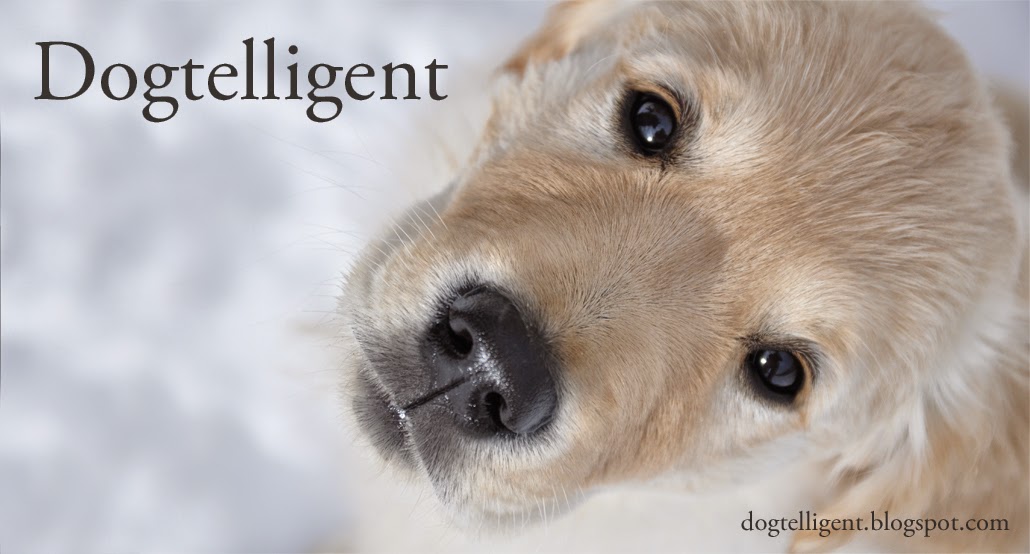












































.jpg)






